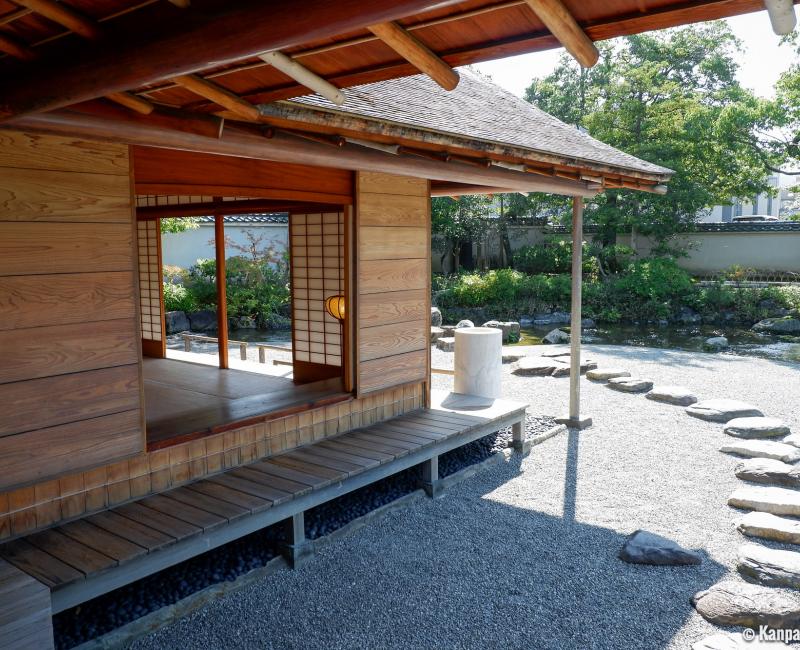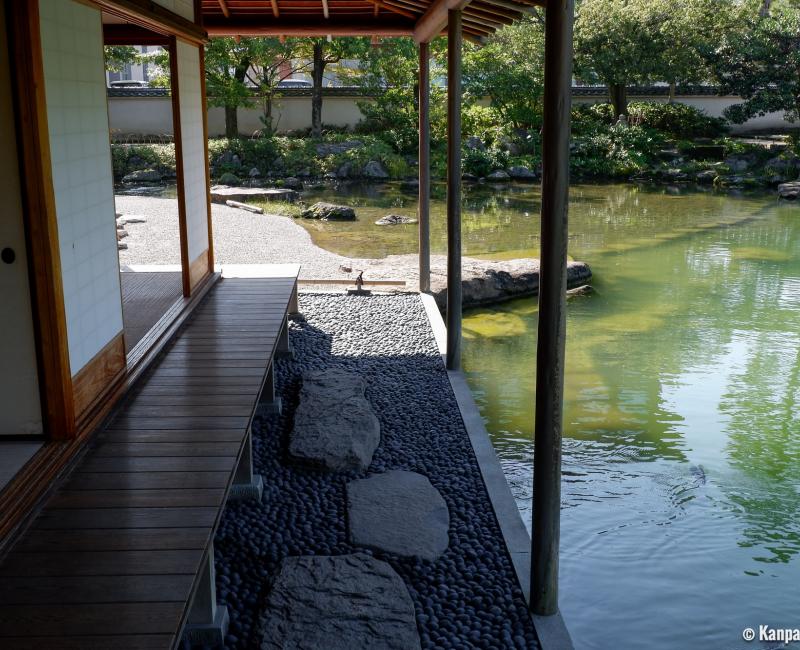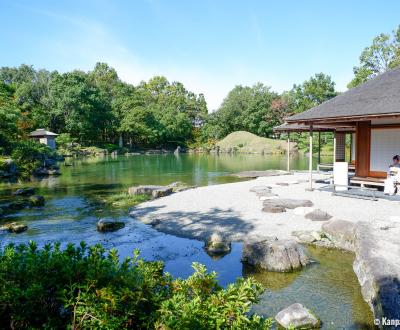Yokokan
Refinements of an Ancient Japanese Garden
Yokokan is a Japanese garden located in the center of Fukui, in the west of Honshu Island. During the Edo period (1603 - 1868), the garden was called Osensui and was attached to the secondary residence of the Matsudaira clan, the feudal lords ruling Echizen province at the times.
Yokokan is a garden of Kaiyushiki Rinsenteien style, which means "stroll garden with trees and pond landscape", that recreates on a smaller scale a seaside scenery. The pond in the center is surrounded by a hilly lawn and a traditional house in the sukiya-zukuri style (the same as Katsura Imperial Villa in Kyoto) seems to be floating on the water. According to historical accounts, the feudal nobility’s beautiful mansion was the birthplace of fourth lord Mitsumichi’s son by his lover. It was also the place where second lord Tadanao ordered his vassal Uemon Nagami to commit seppuku (suicide by disembowelment).

Explore a former seigneurial house
The house in Yokokan is a delight for Japanese classical architecture amateurs, with several rooms opened to the visit. Gozanoma, a room where the lord used to relax, is one of the highlights. Of a delicate refinement, it was built with cedar beams, a tatami floors and doors made of Echizen paper. The tokonoma elevated alcove is ornamented with artworks befitting the seasons: either a pottery, an ink drawing, a calligraphy, a bonsai or an ikebana flower arrangement. On the other side of the wall, visitors are intrigued by another space named Otsukimi-noma, which can translate to "moon-viewing room". Its only purpose was indeed to provide an observation spot for viewing the moon and its reflection in the pond at moonrise or moonset.
Exploration continues in the next room, whose stilt floor is overhanging the ponds and gives the impression of floating above its surface. A little bit further, the visit ends by Oyunodo, a space dedicated to the bath, sheltering an impressive old type of sauna, made of Japanese cypress wood.

A leisurely stroll in typically Japanese landscapes
Outside, the paths treads on large flat stepping stones whose colors were selected to avoid monotony. Each side of the walk is covered with perfectly tended pebble surfaces. Yokokan gathers a collection of Japan’s typical landscape must-have such as:
- A natural stone bridge spanning a narrow stream,
- A shallow pond inhabited by koi carps as well as water birds,
- Several small inlets and artificial hills giving depth to the view,
- Large stones for the mineral touch, some of which are precious and were extracted from Tojinbo cliffs,
- A plentiful vegetation living up to the four seasons, and,
- A little shelter to take a break and enjoy the view.
Yokokan is a green haven of serenity in the heart of the city and it is quite difficult to leave such a peaceful, timeless place. Visiting Yokokan is highly recommended to travelers in Fukui prefecture. It can be combined with the neighboring museum of local history that offers some interesting insights on Fukui’s agitated past on a quick tour.

